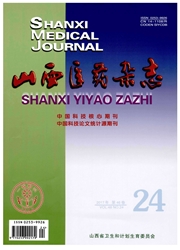

 中文摘要:
中文摘要:
目的观察妊娠糖尿病(gestationaldiabetesmellitus,GDM)孕妇孕中晚期维生素D的营养状态并分析其成因.方法以液相色谱串联质谱的方法检测2013年10月至2015年7月北京协和医院营养科门诊GDM孕妇血清中25羟维生素D(25-OHVkD)浓度,根据是否服用含有维生素D制剂分为服用组和未服用组,服用组调查含维生素D的膳食补充剂应用情况,并根据患者膳食记录统计富含维生素D的食物消费频率.结果共纳入98例GDM孕妇,孕周(29.0±3.3)周,血清总25-OH VitD浓度为(72.03±26.18)nmol/L,缺乏率.服用含维生素0制剂的孕妇血清25-OH VitD高于未服用组[(74.35±26.13)nmol/L比(60.45±23.63)nmol/L,P=0.031],两组缺乏率分别为17.9%和35.7%.血清25-OH VitD2检出率为19.4%(19/98),检出者平均水平为(11.61±6.71)nmol/1〉(6.05-24.71nmol/L),均服用维生素D制剂,未服用组均未检出.分季节比较发现,秋、冬季节孕妇维生素D水平显著低于春、夏两季,缺乏率显著高于春、夏季节.在四季中,仅在秋季服用组的血清25-OHVkD浓度显著高于未服用组[(78.59±27.54)nmol/L比(46.18±18.77)nmol/L,P=0.045],其他3个季节两组无统计学差异;夏季两组缺乏率均为0.膳食记录显示,观察对象奶、蛋的消费频率分别为(7.5±3.8)?欠/周(不饮奶4例)和(5.6±2.2)次/周.结论本研究纳人的GDM孕妇孕中晚期维生素D秋冬季节缺乏较为严重,血清维生素D2检出率高,对维持该群体血清维生素D水平有贡献.膳食中较高的奶、蛋制品消费频率或许有助于维持维生素D水平.
 英文摘要:
英文摘要:
Objective To observe the vitamin D nutritional status and its influencing factors among women with gestational diabetes mellitus (GDM) in the last two trimesters of pregnancy. Methods The high-performance liquid chromatography-tandem mass spectrometry method was adopted for the 25-OH vitamin D (25-OH VitD) de-tection in pregnant women with GDM visiting the outpatient nutrition clinic in Peking Union Medical College Hospi-tal between October 2013 and July 2015. The women were divided into two groups based on whether they were tak-ing vitamin D supplements. We surveyed vitamin D containing dietary supplements use in the vitamin D intake group, and the frequency of consumption of food high in vitamin D based on the patients, diet records. Results A total of 98 pregnant women with GDM were included, with the gestational age of (29. 0 ±3. 3) weeks. The total serum 25-OH VitD was (72.03 ±26. 18) nmol/L. The incidence of vitamin D deficiency ( 〈50 nmol/L) was 20.4% (20/98). The serum 25-OH VitD level in the pregnant women was higher in the vitamin D intake group than in the non-intake group [ (74 35 ±26. 13) nmol/L (60. 45 ±23. 63) nmol/L, P =0.031 ]. The vitamin D deficiency rate was 17. 9% and 35. 7% in the vitamin D intake group and the non-intake group, respectively. The level of ser-um 25-OH VitD2 was (11. 61 ±6. 71) (6. 05 - 24 71) nmol/L, with the detection rate of 19. 4 % (19/98) , all in the vitamin D intake group. Serum 25-OH VitD2 was not detected in the non-intake group. Analysis by season showed that the level of serum 25-OH VitD in pregnant women in fall/winter was significantly lower than that in spring/summer; and the vitamin D deficiency rate was significantly higher in fall/winter. The serum 25-OH VitD level in pregnant women in the vitamin D intake group was significantly higher than in the non-intake group in fall only [ (78. 59 ±27. 54) nmol/L vs(46.18 ± 18.
 同期刊论文项目
同期刊论文项目
 同项目期刊论文
同项目期刊论文
 期刊信息
期刊信息
